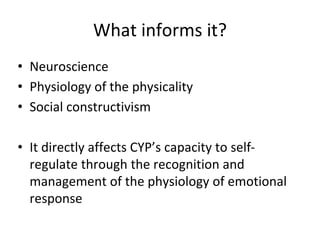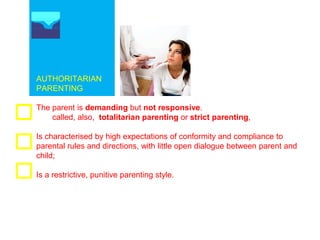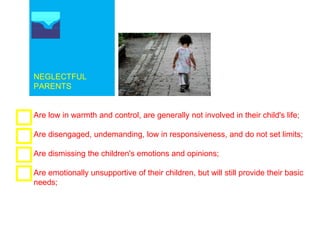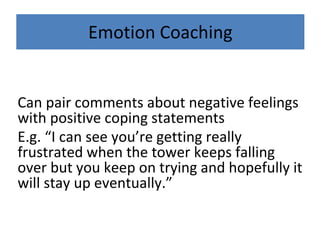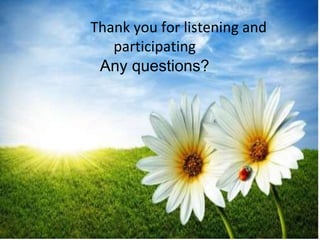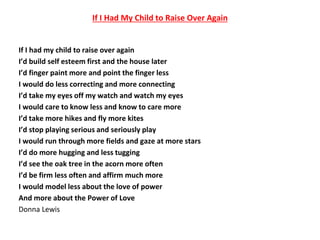This document discusses emotional intelligence and emotion coaching. It defines emotional intelligence as the ability to identify and understand one's own emotions, use emotions during social interactions, use emotional awareness to solve problems, deal with frustration, control how emotions are expressed, and keep distress from overwhelming thinking. Emotion coaching is described as a parenting technique where parents accept children's emotions, use emotional moments to teach life lessons, build trust, and help children develop strategies to handle ups and downs. The benefits of emotion coaching include helping children regulate emotions, problem solve, focus attention, and have healthier relationships.













